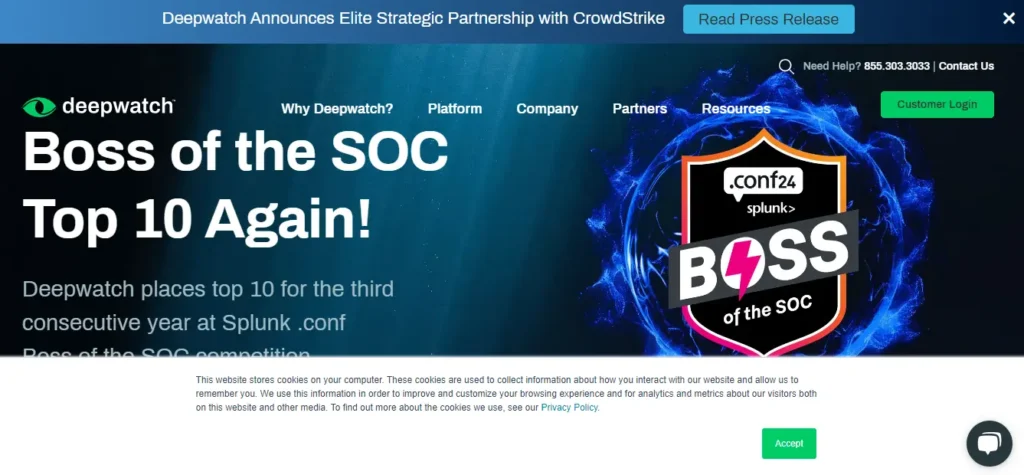In today’s digital world, protecting sensitive data from cyber threats is critical. Artificial intelligence (AI) is changing this security.
AI-powered tools can identify threats, predict risks, and automate responses, making cybersecurity more efficient and leading-edge.
AI tools help shaping cybersecurity. Learn how these AI tools for cybersecurity enhance threat detection, strengthen access, and predict potential breaches.
Whether you’re a cybersecurity expert or curious about AI’s role in digital security, this guide gives you an insight into the advance technology that protects our online environment.
What is the Role of AI in Cybersecurity?
AI has the functionality to enhance hazard detection in cybersecurity thru its advanced algorithms and machine studying abilities. By analyzing massive volumes of information, AI tools can identify patterns and anomalies that could indicate capability cyber threats. This capability to investigate and process information at a scale and speed unequalled by human operators can significantly bolster cybersecurity efforts.
Furthermore, AI will have a giant effect on incident reactions in cybersecurity. AI-powered structures can automate the detection and reaction, enabling agencies to react rapidly to cyber-assaults and mitigate their effects. By supervising and studying record sets in real-time, AI models can perceive and reply to cyber threats quicker than traditional methods.
Despite the mixing of AI in cybersecurity, human understanding remains important in combating cyber threats. While AI can automate unique techniques, cybersecurity specialists possess crucial wondering and choice-making talents crucial in identifying superior cyberattacks and developing effective strategies to protect against them.
Also Read: Best AI Productivity Tools
Top 10 AI Tools for Cybersecurity
1. Darktrace:

Darktrace is an AI tool that uses unsupervised machine learning to detect and respond to threats in real time. It continuously monitors an organization’s network for abnormal activity and can identify threats that traditional security tools can circumvent.
Features:
- Unsupervised machine learning
- Real-time risk detection
- Automated incident response
- Threat hunting
- User Entities and Behavior Analysis (UEBA) .
Usage:
- Investigate and respond to cyber attacks
- Investigate security incidents
- Prevent future attacks
- Strengthen security posture
- Meet compliance requirements
2. Cylance:

Cylance is an AI-powered endpoint protection platform that uses machine learning to prevent, detect, respond to, and mitigate advanced threats.
It can detect and prevent malware, ransomware, and other malicious attacks before they harm the system.
Features:
- Machine learning based threat mitigation
- Endpoint Detection and Response (EDR) .
- Whitelist of the project
- Behavioral analysis
- Deceive technology
Usage:
- Protect endpoints from malware, ransomware, and other attacks
- Investigate and respond to security incidents
- Investigate suspicious activity
- Clean up compromised systems
- Deal with threats
3. Vectra AI:

Vectra AI is a Network Traffic Analysis (NTA) platform that uses AI to detect and respond to advanced threats in real time.
It can detect malicious activity on the network, such as backups, data extraction, and command control (C2) traffic.
Features:
- AI-powered network traffic analysis
- Threat identification and response
- User-Enterprise Behavior Analysis (UEBA) .
- Network segmentation
- Packet capture and analysis
Usage:
- Investigate and respond to advanced threats
- Investigate security incidents
- Improved threat hunting capabilities
- Segment the network to reduce the attack surface
- Analyze network traffic for security insights
4. SentinelOne:

SentinelOne is an endpoint protection platform (EPP) that uses AI and machine learning to protect endpoints from a wide range of threats. It can detect, detect, react, and prevent attacks in real time.
Features:
- AI-powered endpoint security
- Next Generation Antivirus (NGAV).
- Endpoint Detection and Response (EDR).
- ActiveEDR
- Depth of visibility and control
Usage:
- Protect endpoints from malware, ransomware, and other attacks
- Investigate and respond to security incidents
- Investigate suspicious activity
- Clean up compromised systems
- Deal with threats
5. Cybereason:

Cybereeson is a security operating system (SOP) that uses AI to automate threat detection, detection, and response. It can help security teams identify threats and respond faster and more effectively.
Features:
- AI-Powered Safety Operating Procedure (SOP).
- Next-Generation Endpoint Security (NGAV).
- Extended Diagnosis and Response (XDR).
- Security Automation and Orchestration (SOAR).
- Hunting and forensic investigations
Usage:
- Automate threat detection, detection, and response
- Improve the efficiency of the security team
- Reduce threat response time
- Improved threat-hunting capabilities
- Investigate security incidents
6. McAfee MVISION:

McAfee MVISION is a cloud-based security platform that uses AI to integrate endpoint, network and cloud security. It provides an integrated view of an organization’s security posture and can help improve threat detection, detection, and response.
Features:
- AI-powered cloud security system
- End Protection (EPP).
- Network Security (NGFW).
- Cloud Security (CASB).
- Data Loss Prevention (DLP).
Usage:
- Integrate endpoint, network, and cloud security
- Improve threat detection, detection and response
- Have an integrated view of the security posture of the organization
- Simplify security management
- Reduce costs
7. FortiAI:

FortiAI is an AI-powered security product from Fortinet that can be integrated with Fortinet security products. These features can help improve threat detection, detection and response.
Features
- AI-driven threat detection
- Automated incident response
- Network traffic analysis
- Project management
- Sandboxing
Usage:
- Improve threat detection, detection, and response
- Automate security tasks
- Reduce the burden on security teams
- Protect the cloud environment
- Protect against advanced threats
8. Palo Alto Networks Prisma Cloud:

Palo Alto Networks Prisma Cloud is a cloud security platform that uses AI to protect cloud services and data. It can detect and prevent threats, as well as help ensure security compliance.
Features:
- AI-powered cloud security system
- Cloud Workload Protection Policy (CWPP).
- Cloud Security Position Management (CSPM).
- Cloud native security
- Compliance management
Usage:
- Protect cloud operations and data
- Analyze and prevent cloud threats
- Ensure safety compliance
- Strengthen the cloud security posture
- To identify cloud security risks
9. Crowdstrike Falcon:

Crowdstrike Falcon is a cloud-delivered endpoint protection (EPP) platform that uses AI to protect endpoints from a wide range of threats. It can detect, detect, react and prevent attacks in real time.
Features:
- AI-powered endpoint security
- Next Generation Antivirus (NGAV).
- Endpoint Detection and Response (EDR).
- Managed threat hunting
- Prevention of violations
Usage:
- Protect endpoints from malware, ransomware, and other attacks
- Investigate and respond to security incidents
- Investigate suspicious activity
- Clean up compromised systems
- Deal with threats
10. Deepwatch:

Deepwatch is a managed security service provider (MSSP) that uses artificial intelligence for 24/7 security monitoring and threat detection. This can help organizations identify and respond to threats more quickly and effectively.
Features:
- Security monitoring with AI
- Threat detection and response
- Managed detection and response (MDR)
- Vulnerability management
- Security governance, automation and response (SOAR)
Usage:
- Get 24/7 security monitoring and threat detection
- Improve the efficiency of the security team
- Reduce the time needed to respond to threats
- Improve the ability to detect threats
- Access to information security expertise.
Also Read: Best AI Tools For Coding
Final Thoughts
AI tools are transforming cybersecurity by providing advanced threat detection, predictive capabilities and automation. These AI tools for cybersecurity, such as Darktrace and IBM Watson for Cyber Security, enhance security by detecting patterns and anomalies in real time, enabling faster response to previously unknown threats.
Predictive analytics provides early prevention, while automation reduces the burden on human analysts and increases productivity. AI systems are constantly learning and adapting to emerging threats to remain effective. Additionally, AI tools provide actionable insights that enable security teams to make informed decisions.
Overall, the integration of AI into cybersecurity strengthens defenses against ever-changing cyber threats, allowing organizations to be more resilient and better prepared When cyber threats are becoming more sophisticated, AI will play an increasingly important role in maintaining robust cybersecurity.
FAQ’S
1. Is AI the destiny of cybersecurity?
AI is undeniably the following leap forward in enterprise innovation, and cybersecurity isn’t any exception.
2. What is the subsequent destiny of AI?
The human workforce is liberated to consciousness on duties for which they’re extra prepared, such as the ones requiring creativity and empathy.
3. Who earns greater, cyber protection or AI?
Due to the critical nature in their function, cybersecurity experts typically get hold of competitive repayment.



















 Views Today : 141
Views Today : 141 Views Yesterday : 77
Views Yesterday : 77